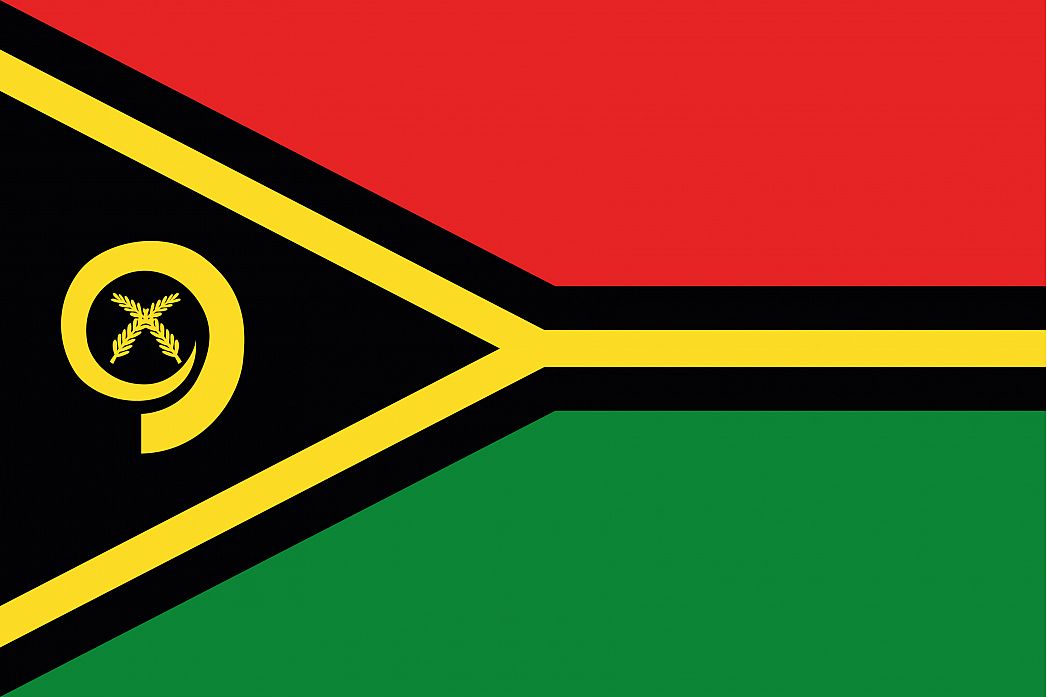The flag has a thin yellow line through the middle with an isosceles triangle on the side used for hoisting. The pall forms a Y – shape on the hoisting side. The triangle is black with a golden tusk of a boar inside. The tusk encircles two yellow namele fern fronds that cross each other. The triangle’s outer edges are lined with the top half of the Y – shape formed by the yellow line. However, the Y – shape is sandwiched on either side by a black color, which also forms a Y – shape. The top side of the flag that is not covered by the Y – shaped black color is covered with red while the bottom is green.
The green is used to show the wealth of vegetation that is found in the island while the red is to show bloodshed of both humans and wild boars. Wild boars are much engraved into the cultural practices of the populace. The triangle is also for tradition. The black is symbolic of the ni-Vanuatu folk. The fimbriations were added so that the black stands out. The yellow line forming a Y- shape symbolizes the religious light spreading in a similar pattern to the Pacific Ocean’s islands. The tusk is a symbol of prosperity commonly worn as a pendant while the namele symbolizes peace.
The flag was officially adopted on February 18, 1980. Later on, in the year 1977, a local artist by the name Kalontas Malon designed a flag that was almost similar in color and all the symbolisms going with the previously adopted flag. Malon’s design was adopted by Vanua’aku Pati. The Vanua’aku Pati is a socialist and democratic party in the state of Vanuatu. The ratio of the width to the length of the current flag is 3 to 5.
Before being called Vanuatu, the country was called New Hebrides. In 1963, the nation used a flag consisting of blue, yellow, and white stripes during the South Pacific Games. This design was before the political parties designed their own flags. The colors that symbolized tradition, red, green, and black, were used in most of the flags. After Malon made his design in the year 1977, the Vanuatu Party (Vanua’aku Pati) immediately adopted the flag. This party led Vanuatu to independence in the year 1980. Later on during the Independence Day of Vanuatu on July 30, 1980, the flag was used as a basis for the national flag after local artists had submitted their designs.
This page was last modified on May 1st, 2018
More on Graphicmaps

Published on 2019-11-06
What is a Trade Embargo?

Published on 2019-11-04
Which Two Countries Used to Have the Same Flag?

Published on 2019-09-16
What Is the Only Two-Sided State Flag?

Published on 2019-09-16
Which Country Flag Looks Like the Texas Flag?

Published on 2019-08-29
Flags That Resemble the US Flag

Published on 2019-08-20
